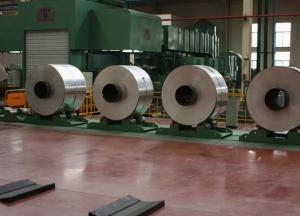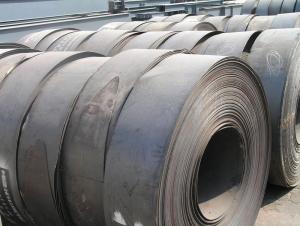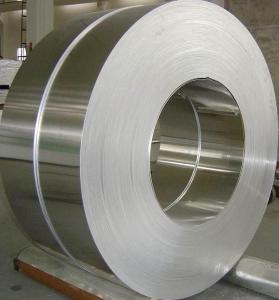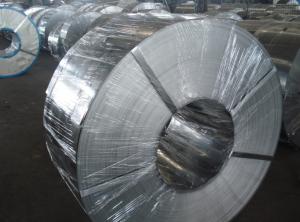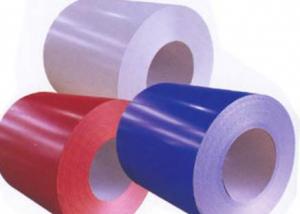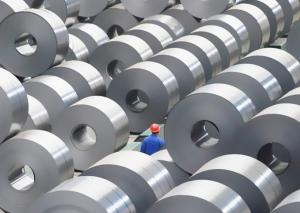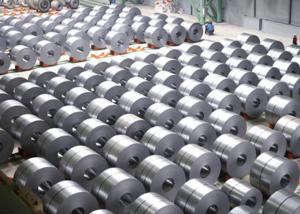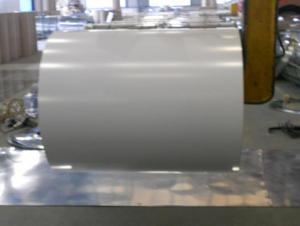Hot Rolled Band Steel In Coil Corrugated Steel Band With Competitive Price
- Loading Port:
- Tianjin
- Payment Terms:
- TT or LC
- Min Order Qty:
- 50 m.t.
- Supply Capability:
- 20000 m.t./month
OKorder Service Pledge
OKorder Financial Service
You Might Also Like
Product Description:
OKorder is offering Hot Rolled Band Steel In Coil Corrugated Steel Band With Competitive Price at great prices with worldwide shipping. Our supplier is a world-class manufacturer of steel, with our products utilized the world over. OKorder annually supplies products to European, North American and Asian markets. We provide quotations within 24 hours of receiving an inquiry and guarantee competitive prices.
Product Applications:
Hot Rolled Band Steel In Coil Corrugated Steel Band With Competitive Price are ideal for structural applications and are widely used in the construction of buildings and bridges, and the manufacturing, petrochemical, and transportation industries.
Product Advantages:
OKorder's Hot Rolled Band Steel In Coil Corrugated Steel Band With Competitive Price are durable, strong, and resist corrosion.
Main Product Features:
· Premium quality
· Prompt delivery & seaworthy packing (30 days after receiving deposit)
· Corrosion resistance
· Can be recycled and reused
· Mill test certification
· Professional Service
· Competitive pricing
Product Specifications:
Corresponding Steel Grade for Reference:
CHN, GB | JPN, JIS | GER, DIN |
50CrVA | SUP10 | 50CrV4 |
GBR, BS | FRA,FN | |
735A51 | 50CV4 |
Chemical Composition:
C | Si | Mn |
0.46~0.54 | 0.17~0.37 | 0.50~0.80 |
S | P | Cr |
≤0.030 | ≤0.030 | 0.80~1.10 |
Ni | Cu | V |
≤0.35 | ≤0.25 | 0.10~0.20 |
Mechanical Properties:
-Tensile Strength σb (MPa): ≥1274 (130)
-Yield Strength σs (MPa): ≥1127 (115)
-Elongation δ5 (%):≥10
-Percentage reduction of area: ψ (%): ≥40
-Hardness:
1, Hot rolled, ≤321HB
2, Cold drawn + Heat treatment: ≤321HB
-Norm of heat treatment:
1, Quenching: 850℃±20℃.
2, Cooled by oil.
3, Tempering: 500℃±50℃.
Usage/Applications
Mechanical Properties are good. 50CrVA have high hardenability. The element V reduces thermal sensitivity and improves the strength and toughness. The fatigue strength and yield point are high but the weld ability is bad.
-50CrVA is a nice material of spring. Usually it’s used as valve spring, piston spring and secure valve spring with big section that can bear much load. The working temperature is below 300℃
Packaging & Delivery
-Packing Detail: The products will be well packed.
-Delivery Detail: 30~45 working days after receive buyer’s T.T. or L/C.
FAQ:
Q1: Why buy Materials & Equipment from OKorder.com?
A1: All products offered byOKorder.com are carefully selected from China's most reliable manufacturing enterprises. Through its ISO certifications, OKorder.com adheres to the highest standards and a commitment to supply chain safety and customer satisfaction.
Q2: How do we guarantee the quality of our products?
A2: We have established an advanced quality management system which conducts strict quality tests at every step, from raw materials to the final product. At the same time, we provide extensive follow-up service assurances as required.
Q3: How soon can we receive the product after purchase?
A3: Within three days of placing an order, we will begin production. The specific shipping date is dependent upon international and government factors, but is typically 7 to 10 workdays.
Q4: What makes stainless steel stainless?
A4: Stainless steel must contain at least 10.5 % chromium. It is this element that reacts with the oxygen in the air to form a complex chrome-oxide surface layer that is invisible but strong enough to prevent further oxygen from "staining" (rusting) the surface. Higher levels of chromium and the addition of other alloying elements such as nickel and molybdenum enhance this surface layer and improve the corrosion resistance of the stainless material.
Q5: Can stainless steel rust?
A5: Stainless does not "rust" as you think of regular steel rusting with a red oxide on the surface that flakes off. If you see red rust it is probably due to some iron particles that have contaminated the surface of the stainless steel and it is these iron particles that are rusting. Look at the source of the rusting and see if you can remove it from the surface.
Images:

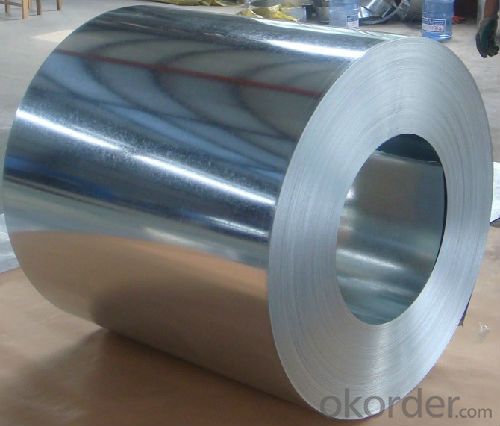
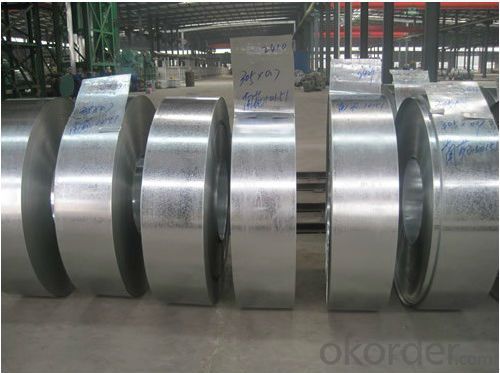
- Q:What are the different types of steel fencing and their applications?
- There are several different types of steel fencing, each with their own unique applications. Some common types include chain link fencing, ornamental steel fencing, and mesh panel fencing. Chain link fencing is often used for residential or commercial purposes due to its affordability and durability. Ornamental steel fencing is more decorative and is commonly used for residential properties or as a stylish addition to parks and gardens. Mesh panel fencing is versatile and can be used for various applications, such as securing construction sites or creating animal enclosures. Ultimately, the choice of steel fencing depends on the specific needs and requirements of the project or property.
- Q:What are the common uses of steel in the telecommunications industry?
- Steel is commonly used in the telecommunications industry for the construction of towers, transmission lines, and other infrastructure. It provides the necessary strength, durability, and stability needed to support and transmit signals over long distances. Additionally, steel is used in the manufacturing of various telecommunications equipment, such as antennas, satellite dishes, and cable trays.
- Q:How do steel products contribute to the recycling industry?
- Steel products contribute to the recycling industry by being highly recyclable themselves. Steel can be melted down and reused multiple times without losing its properties, making it an ideal material for recycling. This helps reduce the demand for raw materials and energy consumption, conserving natural resources and reducing greenhouse gas emissions. Additionally, steel recycling reduces the volume of waste that ends up in landfills, promoting a more sustainable and circular economy.
- Q:What are the applications of steel forgings in aerospace?
- Steel forgings have a wide range of applications in aerospace due to their high strength, durability, and reliability. They are commonly used in critical components such as landing gear, engine parts, turbine discs, and structural elements. Steel forgings provide the necessary strength-to-weight ratio and resistance to fatigue and impact that are essential for ensuring the safety and performance of aircraft in demanding operational conditions.
- Q:How is steel wire rope inspected for safety?
- Steel wire rope is inspected for safety through a comprehensive process that involves visual examination, non-destructive testing, and load testing. Trained inspectors carefully inspect the wire rope for any signs of wear, corrosion, or deformations that may compromise its integrity. Additionally, non-destructive testing methods such as magnetic particle inspection or ultrasonic testing are employed to detect any hidden flaws or defects within the rope. Finally, load testing is conducted to ensure the wire rope can withstand the expected loads without failure. By following these inspection procedures, the safety of steel wire ropes can be effectively evaluated and maintained.
- Q:What are the different types of steel forgings and castings available?
- There are several types of steel forgings and castings available, including carbon steel, alloy steel, stainless steel, and tool steel. Each type has its own unique properties and characteristics, making them suitable for various applications in different industries. Carbon steel forgings and castings are known for their strength and durability, while alloy steel offers enhanced strength, toughness, and resistance to corrosion. Stainless steel forgings and castings are highly resistant to rust and staining, making them ideal for applications in the food and medical industries. Lastly, tool steel forgings and castings are specifically designed for their high hardness and wear resistance, making them suitable for cutting, shaping, and forming tools.
- Q:How is steel wire used in the production of springs for automobiles?
- Steel wire is commonly used in the production of springs for automobiles due to its high tensile strength and durability. It is typically coiled and shaped into the desired spring design, allowing it to absorb and release energy when under pressure or in motion. This helps to provide stability, support, and suspension to various components of the automobile, ensuring a smooth and comfortable ride.
- Q:How is steel used in the construction of railway stations?
- Steel is used in the construction of railway stations for various purposes such as structural support, reinforcement, and the fabrication of platforms, tracks, and station components. Its high strength and durability make it ideal for withstanding heavy loads, ensuring the safety and stability of the station infrastructure.
- Q:What are the different types of steel rails and their applications in the railway industry?
- There are several types of steel rails used in the railway industry, including the following: 1. Light rails: These are commonly used in light-duty applications such as trams and light rail transit systems. 2. Heavy rails: These are used in mainline railways and high-speed tracks where heavy loads and high traffic volumes are expected. 3. Crane rails: These are specifically designed to withstand the heavy loads and constant movement of cranes in industrial settings, such as ports and construction sites. 4. Grooved rails: These rails have grooves or flanges on their surface to provide guidance for tram or train wheels, making them suitable for urban and suburban rail systems. 5. Guard rails: These are installed along the edges of railway tracks to prevent derailment and provide additional safety measures. 6. Switches and crossings: These specialized rail types are used at junctions, switches, and crossings to allow trains to change tracks safely. Each type of steel rail serves a specific purpose within the railway industry, ensuring efficient and safe transportation of passengers and goods.
- Q:How are steel products used in the marine and shipbuilding industry?
- Steel products are widely used in the marine and shipbuilding industry due to their strength, durability, and corrosion resistance. They are used to construct the hull, decks, bulkheads, and other structural components of ships and offshore structures. Additionally, steel is utilized in the fabrication of equipment, such as propellers, shafts, and anchoring systems. Its use in the marine industry ensures the safety and reliability of vessels, making it essential for shipbuilding and maritime operations.
1. Manufacturer Overview |
|
|---|---|
| Location | |
| Year Established | |
| Annual Output Value | |
| Main Markets | |
| Company Certifications | |
2. Manufacturer Certificates |
|
|---|---|
| a) Certification Name | |
| Range | |
| Reference | |
| Validity Period | |
3. Manufacturer Capability |
|
|---|---|
| a)Trade Capacity | |
| Nearest Port | |
| Export Percentage | |
| No.of Employees in Trade Department | |
| Language Spoken: | |
| b)Factory Information | |
| Factory Size: | |
| No. of Production Lines | |
| Contract Manufacturing | |
| Product Price Range | |
Send your message to us
Hot Rolled Band Steel In Coil Corrugated Steel Band With Competitive Price
- Loading Port:
- Tianjin
- Payment Terms:
- TT or LC
- Min Order Qty:
- 50 m.t.
- Supply Capability:
- 20000 m.t./month
OKorder Service Pledge
OKorder Financial Service
Similar products
New products
Hot products
Hot Searches
Related keywords





